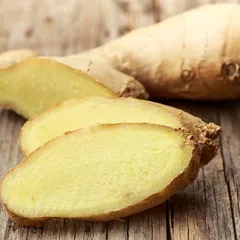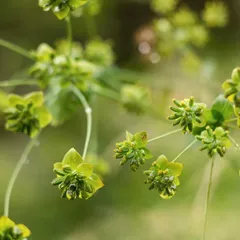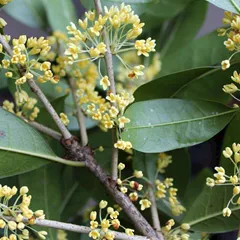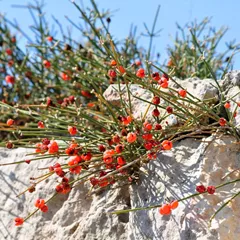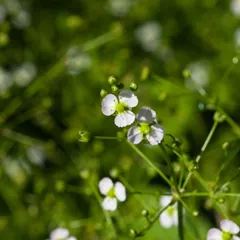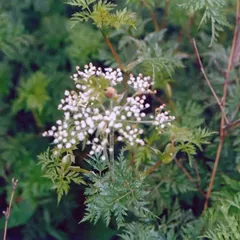Zhen Wu Tang
Zhen Wu Tang
Chinese: 真武汤
Pinyin: Zhēn Wǔ Tāng
Other names: True Warrior Decoction, Black Warrior Decoction, Vitality Combination
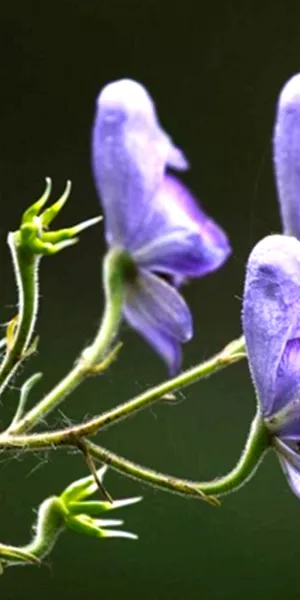
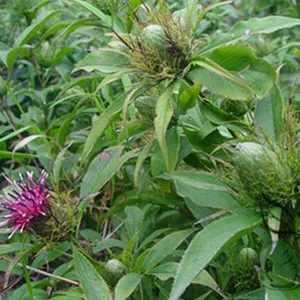
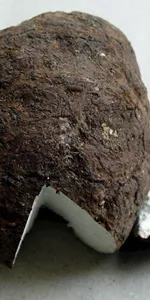
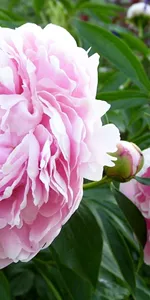
Zhen Wu Tang
Zhen Wu Tang
Chinese: 真武汤
Pinyin: Zhēn Wǔ Tāng
Other names: True Warrior Decoction, Black Warrior Decoction, Vitality Combination
Number of ingredients: 5 herbs
Formula category: Formulas that warm and transform water and Dampness
Conditions for which it may be prescribed: SciaticaHypertensionHypothyroidism and fourteen other conditions
- Warms and tonifies the Yang and Qi of the Spleen and Kidneys
- Eliminates Dampness
Source date: 220 AD
Source book: Discussion of Cold Damage
The information provided here is not a replacement for a doctor. You shouldn't use it for the purpose of self-diagnosing or self-medicating but rather so you can have a more informed discussion with a professional TCM practitioner.
Zhen Wu Tang is a 5-ingredient Chinese Medicine formula with Prepared Aconite (Zhi Fu Zi) as a principal ingredient.
Invented in 220 AD, it belongs to the category of formulas that warm and transform water and Dampness. Its main actions are: 1) warms and tonifies the Yang and Qi of the Spleen and Kidneys and 2) eliminates Dampness.
In Chinese Medicine health conditions are thought to arise due to "disharmonies" in the body as a system. These disharmonies are called "patterns" and the very purpose of herbal formulas is to fight them in order to restore the body's harmony.
In this case Zhen Wu Tang is used by TCM practitioners to fight patterns like Spleen Yang Deficiency, Oedema or Spleen or Kidney Yang Deficiency. From a Western Medicine standpoint, such patterns can give rise to a range of conditions such as congestive heart failure, chronic glomerulonephritis or hyperaldosteronism for instance.
On this page, after a detailed description of each of the five ingredients in Zhen Wu Tang, we review the patterns and conditions that Zhen Wu Tang helps treat.
The five ingredients in Zhen Wu Tang

Zhi Fu Zi is a king ingredient in Zhen Wu Tang. Like the name indicates, it means it has more power than other ingredients in the formula.
1. Prepared Aconite (Zhi Fu Zi)
Zhi Fu Zi tonifies the Fire at the Gate of Vitality, restores the Kidney Yang, and thereby enables the Kidneys to resume their function of transforming water.
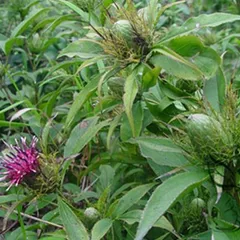
Bai Zhu is a deputy ingredient in Zhen Wu Tang. This means it helps the king ingredient(s) treat the main pattern or it serves to treat a coexisting pattern.
2. Atractylodes Rhizomes (Bai Zhu)
Part used: Dried rhizome
Nature: Warm
Meridian affinity: SpleenStomach
Category: Tonic herbs for Qi Deficiency
Bai Zhu works together with Poria-Cocos mushroom (Fu Ling), another deputy herb here, to strengthen the Spleen and promote urination.
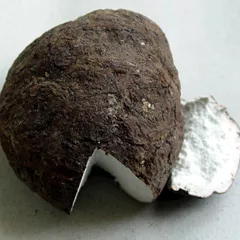
Fu Ling is a deputy ingredient in Zhen Wu Tang. This means it helps the king ingredient(s) treat the main pattern or it serves to treat a coexisting pattern.
3. Poria-Cocos Mushrooms (Fu Ling)
Part used: Dried sclerotium
Nature: Neutral
Taste(s): Sweet
Meridian affinity: HeartKidneyLungSpleen
Category: Herbs that drain Dampness
In general Fu Ling's main actions are as follows: "Encourages urination and drains Dampness. Tonic to the Spleen/Stomach. Assists the Heart and calms the Spirit."
In the context of Zhen Wu Tang, it is used because it drains through the urine the Dampness and pathogenic water that has been retained in the body.
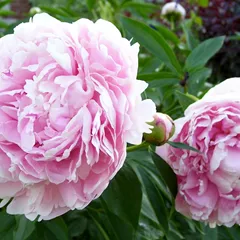
Bai Shao is an assistant ingredient in Zhen Wu Tang. This means that it either serves to reinforces the effect of other ingredients or it moderates their toxicity.
4. White Peony Roots (Bai Shao)
Part used: Dried root
Nature: Neutral
Meridian affinity: LiverSpleen
Category: Tonic herbs for Blood Deficiency
Bai Shao preserves the Yin and alleviates pain. It prevents the dry, hot herbs that promote urination from injuring the Yin.

Sheng Jiang is an assistant ingredient in Zhen Wu Tang. This means that it either serves to reinforces the effect of other ingredients or it moderates their toxicity.
5. Fresh Ginger (Sheng Jiang)
Sheng Jiang warms and dispels the pathogenic water and thereby strengthens the actions of the deputy herbs. It disseminates the Lung Qi, warms the Stomach, and assists Prepared aconite (Zhi Fu Zi), the key herb in this formula, by dispelling the Dampness that has overflowed into the flesh and skin.
Conditions and patterns for which Zhen Wu Tang may be prescribed
It's important to remember that herbal formulas are meant to treat patterns, not "diseases" as understood in Western Medicine. According to Chinese Medicine patterns, which are disruptions to the body as a system, are the underlying root cause for diseases and conditions.
As such Zhen Wu Tang is used by TCM practitioners to treat four different patterns which we describe below.
But before we delve into these patterns here is an overview of the Western conditions they're commonly associated with:
Congestive heart failure Chronic glomerulonephritis Hyperaldosteronism Hypothyroidism Ascites from cirrhosis Meniere's disease Pelvic inflammatory disease Rheumatoid arthritis Hypertension Orthostatic hypotension Basilar insufficiency Osteoarthritis Sciatica Lumbar disc disease Piriformis syndrome Trigeminal neuralgia Postconcussion headache
Again it wouldn't be correct to say "Zhen Wu Tang treats congestive heart failure" for instance. Rather, Zhen Wu Tang is used to treat patterns that are sometimes the root cause behind congestive heart failure.
Now let's look at the four patterns commonly treated with Zhen Wu Tang.

The Spleen is a so-called "Zang" Organ. Learn more about the Spleen in Chinese Medicine
Spleen Yang Deficiency
Pulse type(s): Deep (Chen), Slow (Chi), Weak (Ruo)
Tongue color: Pale
Symptoms: Gas Edema Chills Fatigue Bloating Lassitude Cold limbs Weak Limbs Loose stools Poor appetite Pale complexion Feeling of cold Vagina discharge Sallow complexion Desire to lie down curled up Undigested food in the stools Slight abdominal distension after eating Abdominal pain and distension relieved by pressure and warmth
Zhen Wu Tang is sometimes prescribed by TCM practitioners to treat Spleen Yang Deficiency. This pattern leads to symptoms such as slight abdominal distension after eating, lassitude, desire to lie down curled up and pale complexion. Patients with Spleen Yang Deficiency typically exhibit deep (Chen), slow (Chi) or weak (Ruo) pulses as well as Pale and wet tongue .
Generally speaking, Spleen Yang Deficiency often develops from Spleen Qi Deficiency, but it is more extensive and severe. The common manifestations are these related to digestive functions such as loose stools, poor appetite, slight abdominal distension and pain after eating, gas and bloating.... read more about Spleen Yang Deficiency
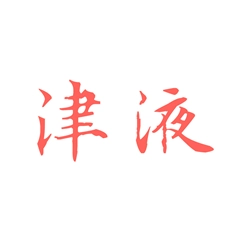
Body Fluids (Jin Ye) is one of Chinese Medicine's vital subtances. Learn more about Body Fluids in Chinese Medicine
Oedema
Pulse type(s): Hidden (Fu), Slowed-down (Huan)
Tongue coating: Thick white coating
Symptoms: Fatigue Sore back Sore knees Cold limbs Eye swelling Loose stools Poor appetite Oedema of face Oedema of feet Oedema of legs Oedema of hands Oedema of ankles Oedema of abdomen Labored breathing Abdomen distension Urinary difficulty Feeling of heaviness General sensation of heaviness distention and fullness
Zhen Wu Tang is sometimes prescribed by TCM practitioners to treat Oedema. This pattern leads to symptoms such as oedema of abdomen, oedema of ankles, oedema of face and oedema of feet. Patients with Oedema typically exhibit hidden (Fu) or slowed-down (Huan) pulses as well as Pale tongue with white sticky coating or white slippery coating.
Oedema (also spelled "Edema") a retention of Body Fluids that results in swellings, depending where the retention occurs: it can be in the limbs, the legs, the face, etc. The swellings are usually so that if one presses on it with a finger, the resulting dip takes a long time to disappear.
Oedema... read more about Oedema

The Spleen is a so-called "Zang" Organ. Learn more about the Spleen in Chinese Medicine
Spleen or Kidney Yang Deficiency
Pulse type(s): Deep (Chen), Fine (Xi)
Tongue color: Pale
Tongue shape: Swollen, Tooth-marked
Symptoms: Edema Coughing Vomiting Tinnitus Dizziness Back pain Knee pain Tiredness Depression Loose stools Palpitations Feeling of cold Urinary difficulty Frequent urination Heavy sensation in the head Abdominal pain that worsens with cold Deep aching and heaviness in the extremities
Zhen Wu Tang is sometimes prescribed by TCM practitioners to treat Spleen or Kidney Yang Deficiency. This pattern leads to symptoms such as abdominal pain that worsens with cold, urinary difficulty, deep aching and heaviness in the extremities and dizziness. Patients with Spleen or Kidney Yang Deficiency typically exhibit deep (Chen) or fine (Xi) pulses as well as a pale tongue.

The Interior in Chinese Medicine is one of the so-called "Eight Principles". Learn more about Interior in Chinese Medicine
Exterior Cold invading the Interior
Pulse type(s): Tight (Jin), Wiry (Xian)
Tongue coating: Thick white coating
Symptoms: Chills Dizziness Constipation Unsteadiness Abdominal pain Low-grade fever Hypochondriac pain Cold hands and feet Generalized twitching Palpitations in the epigastrium Sweating that doesn't reduce fever
Zhen Wu Tang is sometimes prescribed by TCM practitioners to treat Exterior Cold invading the Interior. This pattern leads to symptoms such as abdominal pain, constipation, hypochondriac pain and chills. Patients with Exterior Cold invading the Interior typically exhibit tight (Jin) or wiry (Xian) pulses as well as a tongue with thick white coating.
Formulas similar to Zhen Wu Tang
Fu Zi Tang is 80% similar to Zhen Wu Tang
Bai Zhu Fu Zi Tang is 60% similar to Zhen Wu Tang
Xiao Yao San is 50% similar to Zhen Wu Tang
Gui Zhi Shao Yao Zhi Mu Tang is 44% similar to Zhen Wu Tang
Dang Gui Shao Yao San is 43% similar to Zhen Wu Tang
Si Jun Zi Tang is 40% similar to Zhen Wu Tang




